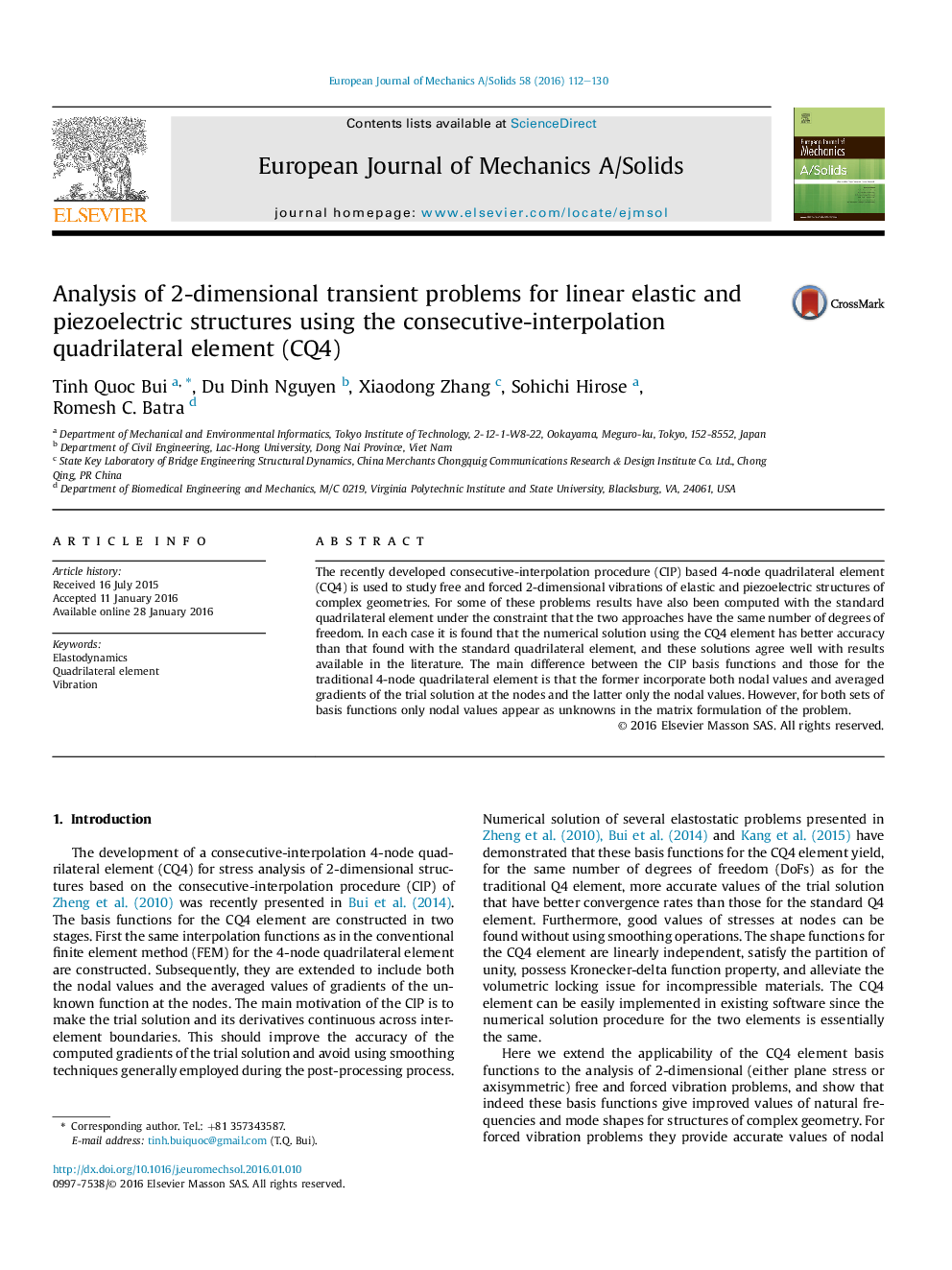| Article ID | Journal | Published Year | Pages | File Type |
|---|---|---|---|---|
| 777955 | European Journal of Mechanics - A/Solids | 2016 | 19 Pages |
•A quadrilateral element for time-dependent elastodynamic problems is analyzed.•Transient and natural frequencies of 2D solids and piezoelectricity are studied.•The CQ4 holds continuous nodal gradients and nodal stresses without smoothing operation.•High accuracy and insensitive mesh distortions to dynamic problems are obtained.•Numerical examples for elastodynamics of simple and complicated structures are studied.
The recently developed consecutive-interpolation procedure (CIP) based 4-node quadrilateral element (CQ4) is used to study free and forced 2-dimensional vibrations of elastic and piezoelectric structures of complex geometries. For some of these problems results have also been computed with the standard quadrilateral element under the constraint that the two approaches have the same number of degrees of freedom. In each case it is found that the numerical solution using the CQ4 element has better accuracy than that found with the standard quadrilateral element, and these solutions agree well with results available in the literature. The main difference between the CIP basis functions and those for the traditional 4-node quadrilateral element is that the former incorporate both nodal values and averaged gradients of the trial solution at the nodes and the latter only the nodal values. However, for both sets of basis functions only nodal values appear as unknowns in the matrix formulation of the problem.
